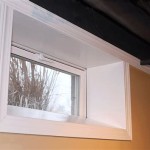What Is Ideal Humidity in Basement
The ideal humidity level in a basement is between 30% and 50%. This range helps prevent mold growth, musty odors, and structural damage. When the humidity level is too high, it can create a breeding ground for mold and mildew, which can cause health problems and damage your belongings. Conversely, when the humidity level is too low, it can dry out your skin and cause static electricity.
There are several factors that can affect the humidity level in your basement, including the climate in your area, the type of foundation you have, and the presence of moisture sources. If you live in a humid climate, your basement is more likely to have high humidity levels. Similarly, if your basement has a dirt floor or walls, it is more likely to be damp. Additionally, if you have a sump pump or dehumidifier in your basement, these appliances can help to lower the humidity level.
There are several things you can do to control the humidity level in your basement. If the humidity level is too high, you can try using a dehumidifier or air conditioner to remove excess moisture from the air. You can also try sealing any cracks or gaps in your foundation or walls to prevent moisture from entering your basement. If the humidity level is too low, you can try using a humidifier to add moisture to the air.
It is important to note that the ideal humidity level in your basement may vary depending on your specific needs and preferences. If you have any concerns about the humidity level in your basement, you should consult with a qualified professional.
Signs of High Humidity in Basement
There are several signs that may indicate that the humidity level in your basement is too high, including:
- Musty odors
- Mold or mildew growth
- Condensation on walls or pipes
- Damp or wet floors
- Buckling or peeling paint
- Rusting metal objects
If you notice any of these signs, you should take steps to lower the humidity level in your basement.
Signs of Low Humidity in Basement
There are also several signs that may indicate that the humidity level in your basement is too low, including:
- Dry, itchy skin
- Static electricity
- Cracking or peeling wood
- Splitting or warping furniture
If you notice any of these signs, you should take steps to increase the humidity level in your basement.
How to Control Humidity in Basement
There are several things you can do to control the humidity level in your basement, including:
- Use a dehumidifier or air conditioner to remove excess moisture from the air.
- Seal any cracks or gaps in your foundation or walls to prevent moisture from entering your basement.
- Use a humidifier to add moisture to the air.
- Ventilate your basement regularly by opening windows and doors.
- Use a moisture-absorbing material, such as silica gel, to absorb excess moisture from the air.
By taking these steps, you can help to control the humidity level in your basement and create a healthier and more comfortable environment.

How To Achieve An Ideal Basement Humidity Of 30 50

How To Achieve An Ideal Basement Humidity Of 30 50

How To Achieve An Ideal Basement Humidity Of 30 50

How To Lower Your Basement S Humidity Level

A Guide To Controlling Nc Home Humidity Newcomb And Company

What Is The Ideal Basement Humidity Level Epp Foundation Repair

How To Achieve An Ideal Basement Humidity Of 30 50

Relative Humidity Chart For Ideal In The House

5 Effective Tips To Reduce Humidity In Your Basement News And Events For Thrasher Foundation Repair

What Should Humidity Be In A Crawl Space Nia
See Also








